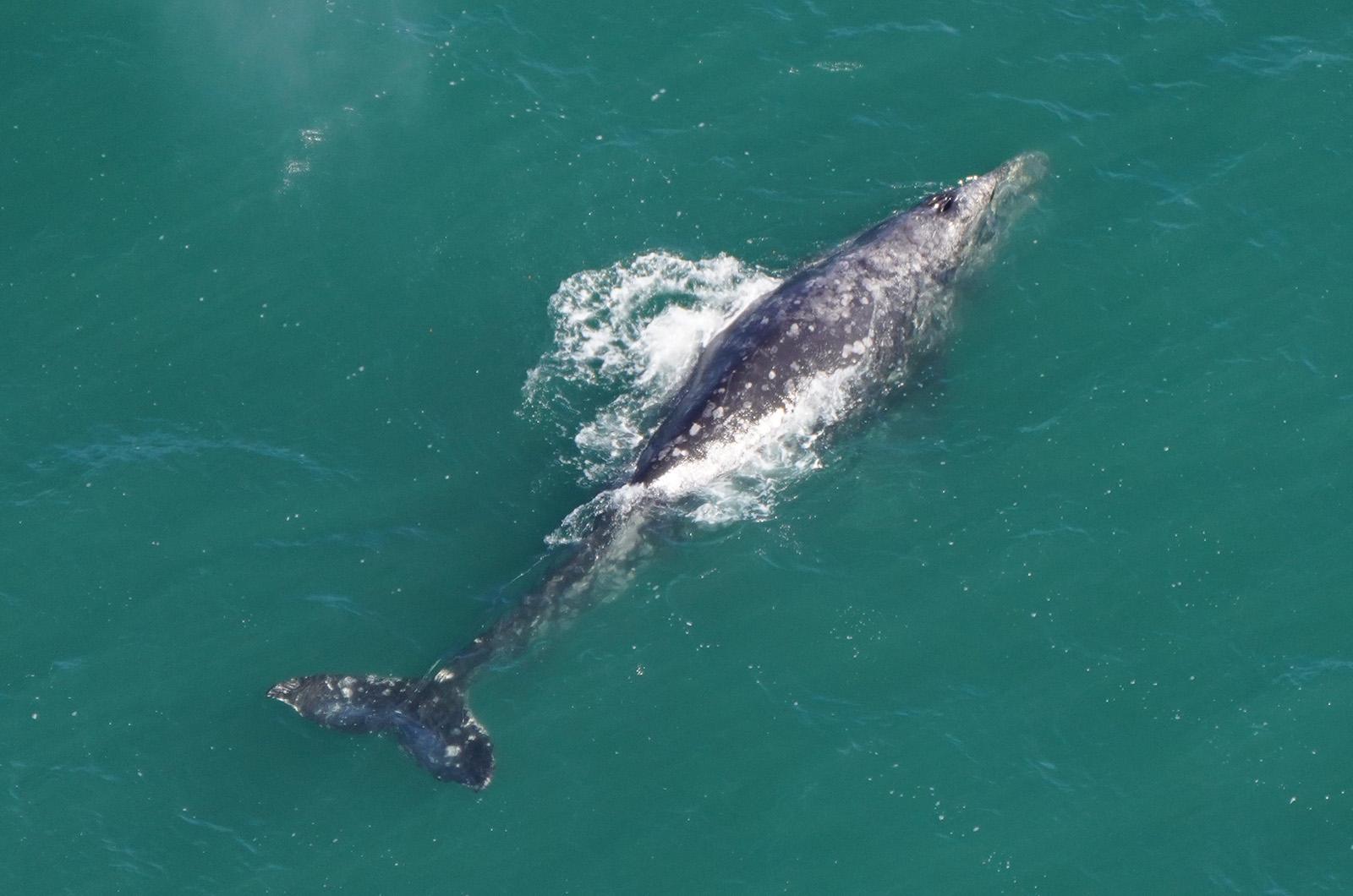The subject was not black and white, but rather a shade of gray.
Last week’s unprecedented sighting of a gray whale off the coast of Nantucket was cause for excitement and awe, not only for me but for the lucky scientists that observed the creature. It had been a while — a long while — since this whale was seen near that island.
One documented occasion was described by Obed Macy who, in 1853, wrote the History of Nantucket; Being a Compendious Account of the First Settlement of the Island by the English. The animal, which he called a scrag and is believed to have been a gray whale, “entered the Harbor and was pursued and killed by the settlers.”
These oft (and overly) hunted whales, not surprisingly, were extirpated from Atlantic waters in the 18th century, so the reappearance of this goliath was big news in more ways than one.
Gray whales do still exist in the Pacific Ocean. This individual was likely from that population, having crossed into the Atlantic — perhaps due to less Arctic ice impeding its movement. Over the last 15 years, there have been only five or so gray whale sightings in the Atlantic, and, of those, none were in New England.
A sizeable whale, grays can reach more than 40 tons with a length of 45 feet. For comparison, that would be the weight of six-and-a-half elephants and almost the length of a tractor trailer truck.
Gray whales were named for their gray skin, with black and white patches caused by abrasions, scars and even other hangers-on such as barnacles and whale lice. In an odd coincidence, the British zoologist who first took credit for describing this species was named John Edward Gray. Though he wasn’t believed to have named the whale after himself, it worked out that way in the vernacular literature. Mr. Gray assigned the animal the scientific nomenclature of Eschrichtius robustus in honor of Danish zoologist Daniel Frederick Eshricht.
A variety of aliases, including devilfish, desert whale, grayback, mussel digger, rip sack and scrag whale, have been used to name and describe this marine mammal. The term devilfish was bestowed by whalers who shouldn’t have been surprised that this animal fought back “like the devil” when hunted and harpooned. Another earlier scientific name, Balaena gibbose, describes the whale’s membership in the group of whales that have baleen plates, structures in their mouths that filter water to obtain food. Balaena gibbose translates into “whale with six bosses,” most likely describing the knobs or knuckles found on the whale’s back. “Bosses” in medieval times, were round projections from shields or from architectural elements. These knobs on the gray whale, called crenulations, are located where many other whales have a dorsal fin, which gray whales lack.
They must not need one. “Mussel digger” might refer to this whale’s unique feeding method. Mostly bottom feeders, gray whales dive to the sea floor, turn onto their side and, with an open mouth, dig into the substrate to obtain their food. This is a fantastic adaptation as an alternative for waiting for random krill to drift into their mouths. Their mouthful of mud would include crustaceans, small fish, worms, eggs and other planktonic debris. After dredging four to six feet lengths of ocean bottom, a feeding pit can be observed after the whale’s eating activities. Often, a feeding whale will emerge at the surface with a dirt-covered muzzle, a sure sign of a satisfying, if napkin-less, meal.
The scientists who saw this rarity have made history, observing a beast not seen in these waters for hundreds of years. Their observation may provide hope for a future Atlantic population — or just a whale of tale.
Suzan Bellincampi is Islands director for Felix Neck Wildlife Sanctuary in Edgartown and the Nantucket Wildlife Sanctuaries. She is also the author of Martha’s Vineyard: A Field Guide to Island Nature and The Nature of Martha’s Vineyard.




Comments
Comment policy »